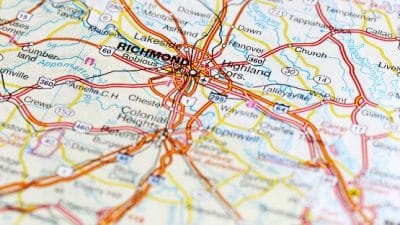The Top Story by Chris Graham
The extension of daylight-saving time in 2007 will save 300,000 barrels of oil annually.
So say supporters of the decision by Congress earlier this year to add a month to the clock-altering move.
“It seems that the benefit for daylight-saving time, from an energy-efficiency standpoint, is that it moves more daylight hours from the early morning, when everybody is asleep, to the early evening, when people are up and about,” said Lowell Ungar, a senior policy analyst with the Washington, D.C.,-based Alliance to Save Energy.
“From an energy standpoint, the benefit is that when it’s light out, and people are up, then they don’t need to turn the lights on. So people use less electricity,” Ungar told The Augusta Free Press.
Some studies have shown that daylight-saving time saves about 1 percent in electrical energy a year, said David Prerau, the author of Seize the Daylight: The Curious and Contentious Story of Daylight Saving Time.
“That’s significant basically because it’s a free thing that the government can do without extending any government resources, and it’s something that can be done just by changing the clocks,” Prerau told the AFP.
Another motivation?
Energy savings has always been central to the argument behind moving the clocks forward to put an extra hour of sun at the end of the day. But the real motivation could be something else entirely.
“The idea with that is that a lot of people don’t like to go out after dark,” said Prerau, who worked with the sponsors of the federal legislation that will have daylight-saving time starting on the second Sunday in March and ending the first Sunday in November beginning in ’07.
“They’re afraid of crime, they don’t like to drive in the dark, or for whatever reasons. Those people get an extra hour of light in the late afternoon, and usually that results in increased shopping and other activities, including increased recreation after work, which increases economic activity related to sports and gardening and amusements. So there’s a large potential for activity economically because of that extra hour of light,” Prerau said.
Golf-industry lobbyists estimate that the extension of daylight-saving time could translate into $400 million in additional greens fees. The barbecue industry projects $150 million in increased sales.
Convenience stores, for their part, see another $1 billion or more coming into their coffers.
“There is a tremendous economic benefit from springing forward,” said Jack Strayer, a former convenience-store lobbyist who is now a senior analyst with the Washington, D.C.,-based National Center for Policy Analysis.
The Air Transport Association of America is chief among those offering a different perspective on that point. U.S.-based airlines could stand to lose in the area of $80 million annually from the move to extend daylight-saving time by four weeks – because the move would throw U.S. airline schedules out of synchronicity with international schedules.
“We are looking at all of our options as it stands, and we’re hopeful that there can be some adjustments made. Because we just don’t think that the daylight-saving time provision is helpful to our industry,” said Victoria Day, a spokesperson for the airline lobby.
On the farm
Part of the mythology that grew up around the concept of daylight-saving time was that moving the clocks forward in the spring, summer and early fall was an aid to farmers.
“Like most Americans, I grew up with this myth that we do it for the farmers. And I really just stopped and paused and thought, ‘Exactly how am I assisting American agriculture with this gesture?’ ” said Michael Downing, the author of Spring Forward: The Annual Madness of Daylight Saving Time.
“What I knew was not just wrong, it was the exact opposite of what was true. Farmers were the group who were the most vociferously opposed to daylight saving in the country. They hated it from the start,” Downing told the AFP.
The reason, Prerau notes, was “because their job forces them to be more dependent on the sun than on the clock.”
“So when you move the clock, either they had to work in times when the sun wasn’t really where they needed it to be, or they have to follow the sun, and that puts them an hour out of sync with everybody else,” Prerau said.
Notice the use of the past tense in the above statements – farmers are no longer vocal on the daylight-saving issue.
“We do not have a position on it. We used to, but it came off our policy books 10 or 15 years ago because it just wasn’t relevant anymore to farming,” said Tracy Taylor Grondine, a spokesperson for the American Farm Bureau Federation.
“When the legislation was in front of Congress as part of the energy bill, the only thing that our members were concerned about, and it was just a handful of members, was the school-bus routes for picking up children in the dark on rural routes. That was the only thing that they were concerned about. Nothing having to do with actual agriculture,” Grondine told the AFP.
Farmers have changed their views on daylight saving for two reasons, Downing said.
“One is, farmers now rely on electricity more than sunlight. So for instance, most henhouses are electrically illuminated. Hens don’t lay eggs according to the sun. They lay according to a schedule of electric lights,” Downing said.
“But more importantly, there are simply fewer farmers. They’re not a powerful political constituency. Here’s a heartbreaking statistic – as of the year 2000, there were more Americans living on golf courses than there were Americans living on farms. And golfers love daylight saving. So we’re likely to get more and more of it,” Downing said.
An argument against the energy factor
On the energy-savings issue, Downing argues that “it turns out that not only does daylight saving not save us any energy, but it actually probably encourages us to use more energy.”
The reason, Downing said, has to do with the very economic benefits cited by the golf, barbecue and convenience-store industries – “we know that daylight-saving time, when we have longer summer evenings, encourages us to go out and spend money. And the reason we know this is that the industries themselves who profit have told the Congress how much it’s worth to them,” Downing said.
“When Americans go outside and go to the mall or to the ballpark, they get into their cars. So daylight saving increases the amount of driving, and therefore consumption of gasoline,” Downing said.
“The issue here is that we can’t save oil with daylight saving, despite the Congress’ insistence that we can. Because we don’t use oil to produce electricity in this country. So the idea that what we’re doing is not turning on our lights in the morning because we have morning sunlight, and we turn them on later in the evening because we have evening sunsets extended, that electricity saving can’t be realized because we use nuclear power and steam to produce electricity, not oil,” Downing said.
Another expansion?
The legislation that Prerau helped craft originally called for a two-month extension of daylight-saving time.
“I actually like the compromise measure better, though. I think that it wound up being a very good law,” Prerau said.
“Our daylight-saving time period that we had was a little off-center in the sense that the sunrises in October are more or less the same as March, and yet we had daylight-saving time in October and not in March. By making this extension more in the spring than the fall, it sort of puts it more into a pattern that matches the sunrise pattern better,” Prerau said.
Downing points out that the move to begin daylight-saving time in the second week of March will turn things off-center in another direction.
“It literally means in 2007 that we are going to spring forward, ironically, in the winter. And we’re going to extend daylight saving into November. In simple terms, this is what it means. Americans will not see the sun in November until the earliest at 7:30 in the morning. Many cities won’t see it until 8:30 in the morning. Which is an awfully late sunrise time,” Downing said.
Downing would like to see a return to what was referred to in the 1960s as uniform time.
“Congress got it right in 1966. That’s when they passed the Uniform Time Act, which gave us six months of daylight saving and six months of standard time,” Downing said.
“I’m a devoted fan of long, late-summer evenings. But what the Congress got wrong after 1966 was that they said that Americans wanted more daylight. Unfortunately, the Congress can’t legislate the length of the day. And we simply have too little sun in the fall and in the winter to make daylight saving work. And Congress can’t give us more sunlight. So I’m all for the six-month compromise,” Downing said.
Prerau, for his part, said he can see adding some time to daylight saving “on both sides down the road.”
“Right now, daylight-saving time is very popular, except in the very middle of winter, when there are very dark mornings,” Prerau said. “This extension is not going to make the earliest sunrise much earlier for most places in the country than they already have. And the sunrises that people get in March aren’t going to be any different than what they already have in October.”










